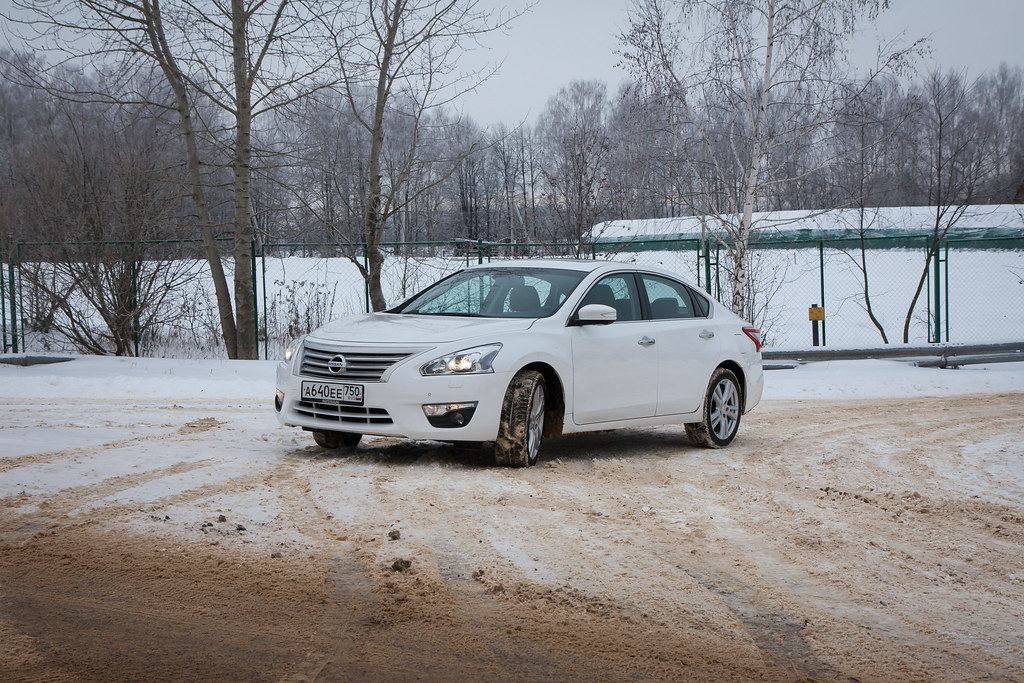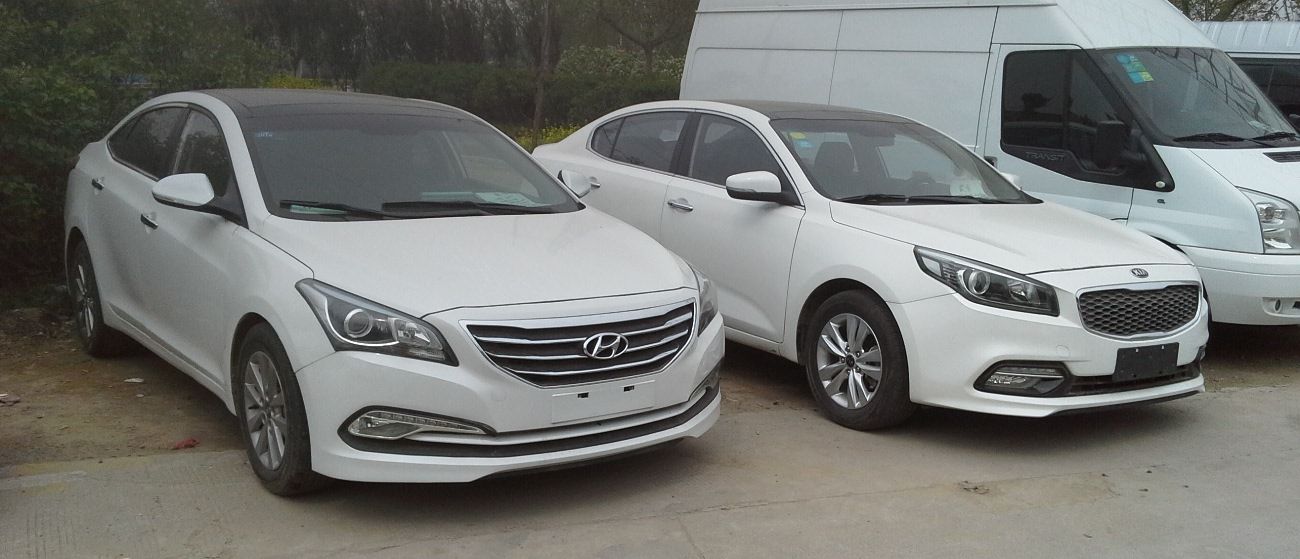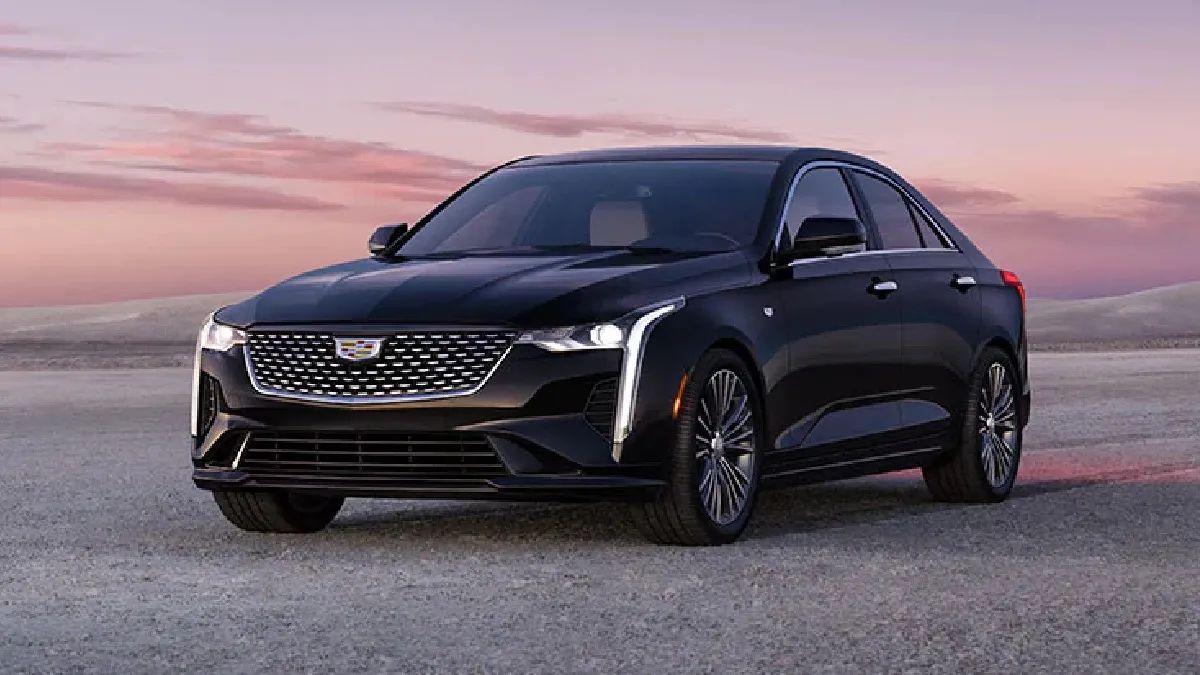
For many, the allure of a new car, especially a luxury model, represents a significant milestone—a tangible reward for hard work and a symbol of aspiration. The moment of driving a pristine vehicle off the dealership lot is often envisioned as the culmination of a dream, promising unparalleled performance, comfort, and prestige. Yet, as countless owners have discovered, the reality can quickly diverge from this ideal, transforming a celebrated acquisition into a source of profound frustration and financial regret.
This sentiment is particularly acute when the vehicle in question carries a premium price tag, amplifying the disappointment when it fails to live up to expectations. Whether it’s an exotic supercar, a sophisticated SUV, or a seemingly practical family hauler, the sting of buyer’s remorse is deeply felt when the initial investment translates into a continuous drain of time, money, and peace of mind. As the saying goes, sometimes the smartest financial move is learning from the costly missteps of others.
In this in-depth analysis, drawing upon insights from consumer surveys and direct owner accounts, we delve into a collection of luxury and premium models that, despite their initial appeal, have left their owners wishing they had chosen differently. We examine the specific issues—ranging from mechanical failures and disappointing performance to unexpected running costs and impracticality—that have turned these automotive dreams into veritable financial nightmares, highlighting the critical importance of looking beyond the showroom shine.
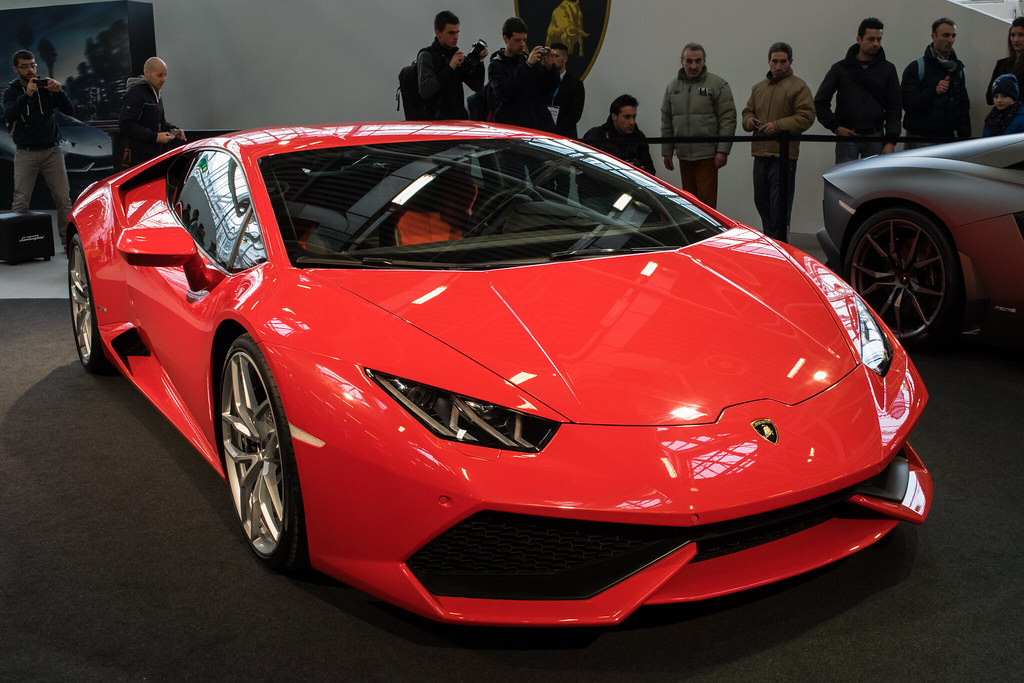
1. **Lamborghini Huracan**
Amelia K., a self-made tech entrepreneur, embarked on what many would consider the ultimate automotive indulgence: the purchase of a $270,000 Lamborghini Huracan. Initially, the experience was everything she had dreamed of, embracing the “sleek speed” and the unique thrill of driving a car she felt broke gender stereotypes, noting it was “typically something you’d see a guy in.”
However, the honeymoon period proved to be remarkably short-lived. Just a few months into ownership, the exhilarating novelty faded, giving way to a stark realization of the car’s profound impracticality. Amelia found herself with a vehicle that, despite its breathtaking aesthetics and performance, became a constant source of annoyance rather than enjoyment, leading her to confess, “I kinda hated” it.
The financial burden associated with maintaining such an exclusive machine quickly became a significant point of frustration. The “upkeep” costs were relentless, with Amelia lamenting how “hard to watch all that money just disappear each month.” This highlights a critical truth about ultra-luxury vehicles: the purchase price is often just the beginning of a never-ending financial commitment.
Beyond the direct costs, the psychological toll of owning a Lamborghini also proved considerable. Amelia found herself “constantly stressed about it getting damaged or scratched,” transforming what should have been a joyous possession into a source of anxiety. In hindsight, her regret was so profound that she expressed a wish for a more practical, albeit still high-end, alternative like a BMW or Mercedes, which would have offered a better balance of luxury and usability.
Car Model Information: 2016 Lamborghini Huracan LP610-4
Name: Lamborghini Huracán
Manufacturer: Lamborghini
Production: 2014–August 2024
Assembly: Sant’Agata Bolognese
Designer: unbulleted list
Platform: Volkswagen Group Modular Sports System Platform
Predecessor: Lamborghini Gallardo
Successor: Lamborghini Temerario
Class: Sports car
BodyStyle: unbulleted list
Layout: unbulleted list
Related: unbulleted list
Engine: Lamborghini V10
Transmission: Dual-clutch transmission
Wheelbase: 2620 mm
Abbr: on
Length: unbulleted list
Width: unbulleted list
Height: convert
Weight: unbulleted list
Order: flip (with fluids)
Sp: uk
Categories: All Wikipedia articles written in British English, All articles that are excessively detailed, All articles with style issues, All articles with unsourced statements, Articles with short description
Summary: The Lamborghini Huracán (Spanish for “hurricane”; [uɾaˈkan]) is a sports car built by Italian automotive manufacturer Lamborghini from 2014 to 2024. The Huracán was revealed online in December 2013, making its worldwide debut at the 2014 Geneva Auto Show and was released to the market in the second quarter of 2014, replacing the Gallardo.
Get more information about: Lamborghini Huracán
Buying a high-performing used car >>>
Brand: Lamborghini Model: Huracan
Price: $209,995 Mileage: 20,495 mi.
Read more about: Phil Mickelson’s Garage Unveiled: The Golf Legend’s High-Performance Rides and Extravagant Lifestyle
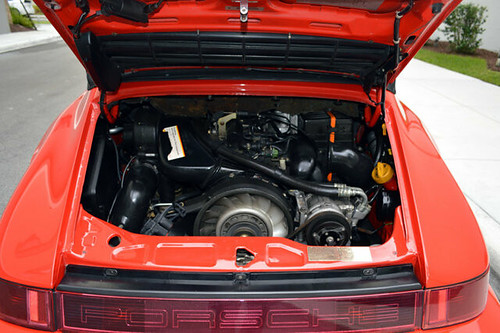
2. **Porsche 911 Carrera**
For Jay L., a successful real estate investor, the Porsche 911 Carrera represented a long-held aspiration, a symbol of personal achievement after years of driving more modest vehicles. He invested a significant $129,000 in this iconic sports car, eager to finally experience the pinnacle of automotive engineering and performance. This decision was driven by a desire to “finally go big” after growing up “on used cars.”
Yet, the pride of ownership quickly turned into regret, largely fueled by the car’s rapid depreciation. Jay noted his immediate remorse over “spending so much so quickly on something that depreciates significantly the second you drive it off the lot.” This financial reality, often overlooked in the excitement of a luxury purchase, underscored a fundamental flaw in his investment.
From an expert perspective, the depreciation of high-performance vehicles, while expected, can be particularly jarring for owners who view their purchase as a lasting asset. The immediate drop in value as a new car becomes a used car represents a substantial, unrecoverable cost that directly impacts the overall financial satisfaction of the owner. For Jay, this was a bitter lesson learned firsthand.
The impracticality of the 911 Carrera for his evolving lifestyle also played a role in his dissatisfaction. Looking ahead to starting a family, Jay realized the two-seater Porsche simply wouldn’t suffice. His decision to trade it in for a “more practical used version – one with space to fit a family, too” and an “electric SUV” highlights a shift in priorities and a search for a vehicle that better aligned with his future needs, even if it meant sacrificing the ultimate sports car dream.
Car Model Information: 2020 Lexus RX 350 Base
Name: Porsche 911
Caption: The 1 millionth 911 produced on display at Volkswagen Group Forum, Berlin
Designer: Ferdinand Alexander Porsche
Manufacturer: Porsche
Production: September 1964 – present
Assembly: Stuttgart,Baden-Württemberg
Class: Sports car
BodyStyle: unbulleted list
Related: unbulleted list
Layout: Rear-engine design,rear-wheel drive
Predecessor: Porsche 356
Categories: 1970s cars, 1980s cars, 1990s cars, 2+2 coupés, 2000s cars
Summary: The Porsche 911 model series (pronounced Nine Eleven or in German: Neunelf) is a family of German two-door, high performance rear-engine sports cars, introduced in September 1964 by Porsche AG of Stuttgart, Germany, and now in its eighth generation. All 911s have a rear-mounted flat-six engine, and usually 2+2 seating, except for special 2-seater variants. Originally, 911s had air-cooled engines, and torsion bar suspension, but the 911 has been continuously enhanced, and evolved across generations. Though the 911 core concept has remained largely unchanged, water-cooled engines were introduced with the 996 series in 1998, and front and rear suspension have been replaced by Porsche-specific MacPherson suspension up front, and independent multi-link rear suspension.
The 911 has been raced extensively by private and factory teams, in a variety of classes. It is among the most successful competition cars. In the mid-1970s, the naturally aspirated 911 Carrera RSR won world championship races including Targa Florio and the 24 Hours of Daytona. The 911-derived 935 turbo also won the 24 Hours of Le Mans in 1979. Porsche won the World Championship for Makes in 1976, 1977, 1978, and 1979 with 911-derived models.
In a 1999 poll to determine the Car of the Century, the 911 ranked fifth — one of two in the top five that had remained continuously in production (the original Beetle remained in production until 2003). The one millionth example was manufactured in May 2017 and is in the company’s permanent collection.
Get more information about: Porsche 911
Buying a high-performing used car >>>
Brand: Porsche Model: 911 Carrera
Price: $30,981 Mileage: 81,179 mi.
Read more about: Luxury Dream or Maintenance Nightmare? These High-End Cars Will Bleed Your Wallet Dry After Their First Major Service
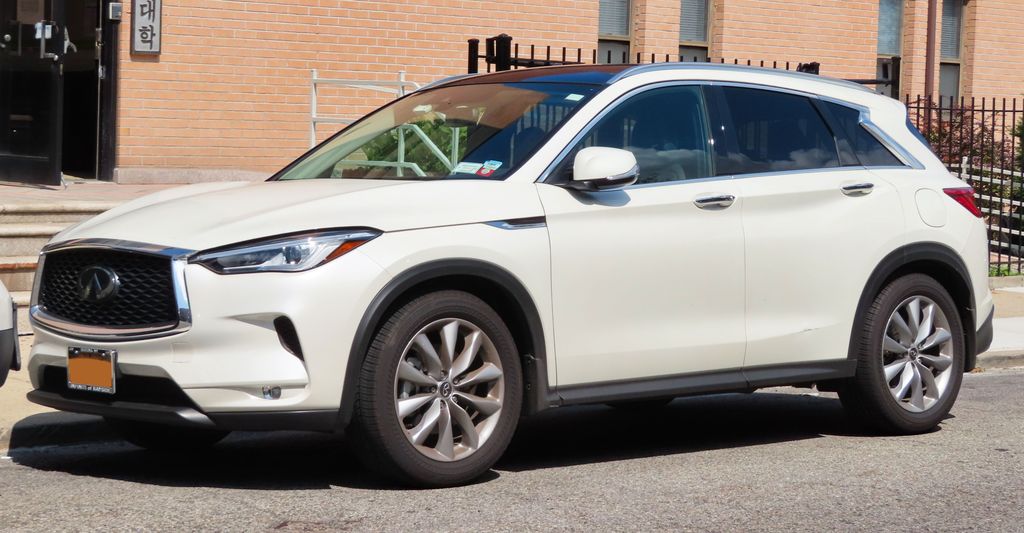
3. **Infiniti QX50**
The Infiniti QX50, with its captivating “stylish design and advanced features,” often presents itself as an enticing option for discerning luxury SUV buyers. However, the ownership experience, as revealed by Consumer Reports data, tells a different story, with a mere 25% of owners expressing a willingness to repurchase the vehicle. This remarkably low satisfaction rate places it squarely among models that fail to meet expectations.
A significant point of contention among owners revolves around the QX50’s variable compression turbo engine. While innovative in concept, many drivers find its real-world performance to be “underwhelming in terms of performance and efficiency.” This feedback suggests a disconnect between the engineering promise and the actual driving dynamics, leaving a considerable portion of owners disappointed with the power delivery and fuel economy of their luxury SUV.
Furthermore, the in-car technology, specifically the infotainment system, has drawn considerable criticism. Owners have described it as being overly “complex and lack of user-friendliness,” creating a barrier to seamless interaction and detracting from the overall luxury experience. In an era where intuitive technology is paramount, a frustrating infotainment interface can quickly diminish satisfaction, making everyday driving tasks more cumbersome than enjoyable.
These combined issues—an underwhelming powertrain, disappointing efficiency, and a challenging infotainment system—culminate in a widespread sentiment of regret. The Infiniti QX50 serves as a prime example of how even a visually appealing and feature-rich luxury vehicle can fall short when core aspects of performance, usability, and owner experience do not align with its premium positioning and price point.
Car Model Information: 2020 INFINITI QX50 Luxe
Name: Infiniti QX50
Caption: Infiniti QX50 (J55)
Manufacturer: Nissan
Aka: unbulleted list
Production: unbulleted list
Class: Compact executive car,Crossover (automobile)
BodyStyle: SUV
Layout: unbulleted list
Categories: 2020s cars, All-wheel-drive vehicles, All articles with unsourced statements, Articles with short description, Articles with unsourced statements from September 2025
Summary: The Infiniti QX50, formerly the Infiniti EX until 2013, is a crossover SUV marketed by Infiniti, Nissan’s luxury division between 2007 and 2025. It was produced over two generations: one generation under both EX and QX50 nameplates, and the second generation under the QX50 nameplate. The first generation model was also marketed as the Nissan Skyline Crossover in Japan.
The first generation QX50 was a minor model update of the EX with its nameplate changed to QX50 to align with the marque’s new Q and QX nomenclature introduced for model year 2013 (China) and model year 2015 (United States). The second-generation QX50 entered production in November 2017 as a 2019 model.
Get more information about: Infiniti QX50
Buying a high-performing used car >>>
Brand: Infiniti Model: QX50
Price: $20,950 Mileage: 69,041 mi.
Read more about: The Definitive Consumer Report: Unmasking the Vehicles and Manufacturers Plagued by the Most Recalls in Automotive History
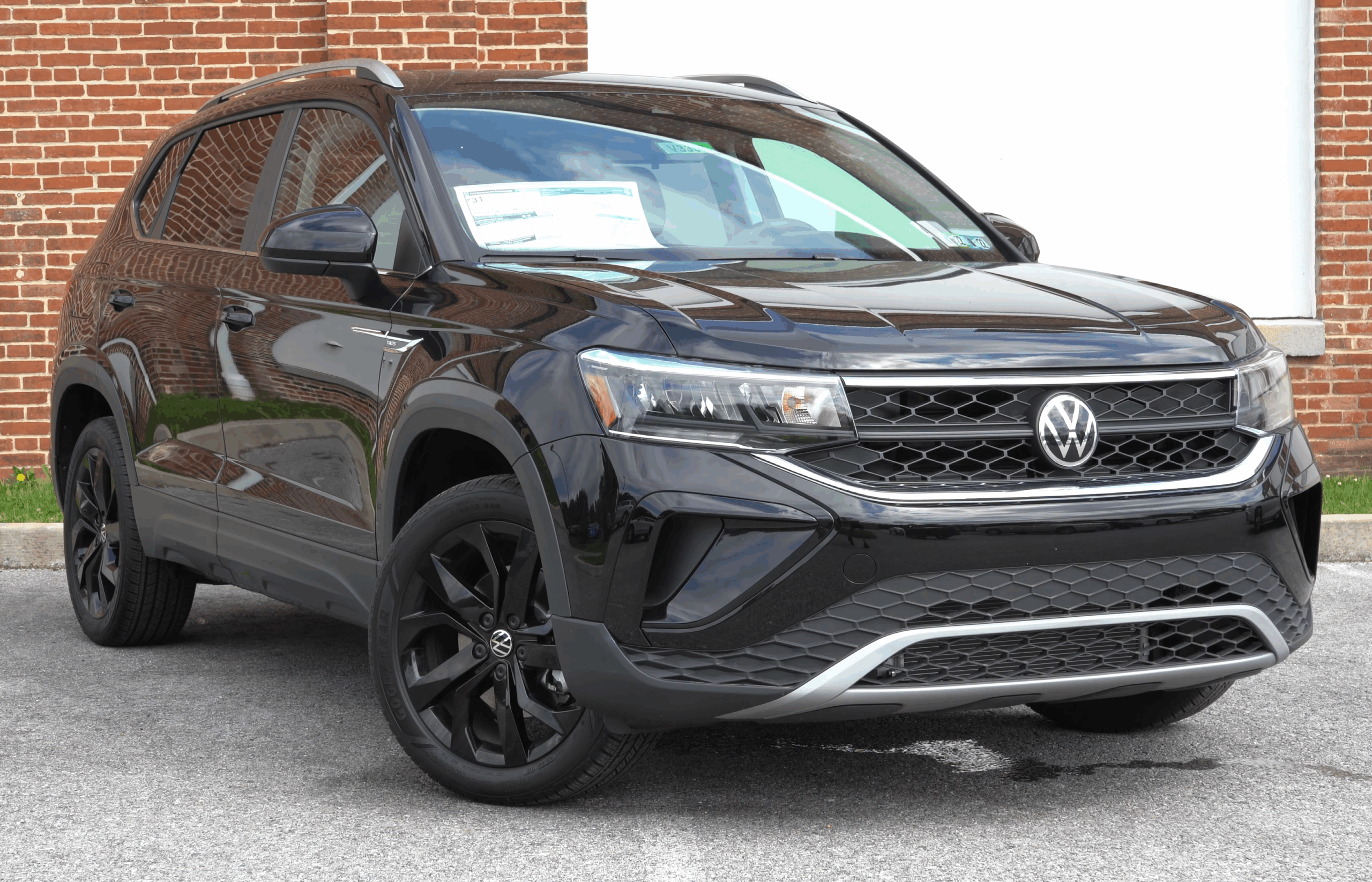
4. **Volkswagen Taos**
The Volkswagen Taos entered the compact SUV segment with the ambition to “offer a premium experience,” aiming to blend German engineering with accessible luxury. Despite this positioning, a significant number of owners have found that the Taos falls short of its promise, with only 38% indicating they would purchase it again, according to Consumer Reports data.
At the heart of many owners’ grievances is the Taos’s powertrain. Common complaints highlight an “underpowered engine and disappointing fuel efficiency,” issues that directly impact the daily driving experience. For a vehicle aspiring to a premium feel, a lack of confident acceleration and less-than-stellar economy can quickly erode satisfaction, especially when compared to rivals in a highly competitive segment.
Beyond performance, concerns regarding the vehicle’s inherent build quality and long-term reliability have also surfaced. “Some owners have reported issues with the vehicle’s build quality and reliability,” suggesting potential concerns about the durability and consistency of its manufacturing. Such problems can lead to unexpected repair costs and inconvenient downtime, adding financial frustration to an already compromised ownership experience.
Ultimately, the Volkswagen Taos illustrates the challenge of delivering a truly premium experience at a compact SUV price point. When core attributes like engine performance, fuel efficiency, and build quality don’t meet expectations, the initial allure of a stylish design and advanced features can quickly dissipate, leaving owners to contend with a vehicle that doesn’t quite live up to its perceived value.
Car Model Information: 2024 Volkswagen Taos 1.5T SE
Name: Volkswagen Taos/Tharu
Manufacturer: Volkswagen
Aka: Volkswagen Tharu
Production: ubl
Assembly: ubl
Designer: Klaus Zyciora
Class: Compact crossover SUV
BodyStyle: SUV
Layout: Front-engine, front-wheel-drive,Front-engine, all-wheel-drive
Platform: Volkswagen Group MQB A1
Related: SEAT Ateca,Škoda Karoq,Jetta VS5
Engine: Petrol engine,Turbocharger,1.4 L TSI 150 I4,1.5 L TSI 160 I4,Multi-point fuel injection,2.0 L TSI 190 I4
Transmission: Manual transmission
Battery: 44.1 kWh (e-Tharu)
ElectricRange: convert
Wheelbase: 105.9 in
Abbr: on
Order: 4453 mm
Length: 175.8 in
Width: 1841 mm
Height: convert
ModelYears: 2022–present
Categories: All-wheel-drive vehicles, All Wikipedia articles written in British English, Articles with short description, CS1 Brazilian Portuguese-language sources (pt-br), CS1 Mexican Spanish-language sources (es-mx)
Summary: The Volkswagen Taos is a compact crossover SUV marketed by Volkswagen. It was first released in October 2018 as the Volkswagen Tharu in China, while the Taos was released in October 2020 as a restyled version of the Tharu for the North American, South American, and Russian markets. In the brand’s lineup, the vehicle is positioned below the Tiguan, and in South America and China above the T-Cross. It is not marketed in core European market.
The Taos is named after Taos, New Mexico. The Tharu name is derived after the eponymous Tharu people, an ethnic group indigenous to Nepal and Northern India.
Get more information about: Volkswagen Taos
Buying a high-performing used car >>>
Brand: Volkswagen Model: Taos
Price: $21,990 Mileage: 35,299 mi.
Read more about: Steer Clear: 15 Cars You Absolutely Should Not Buy in 2025, According to Automotive Experts
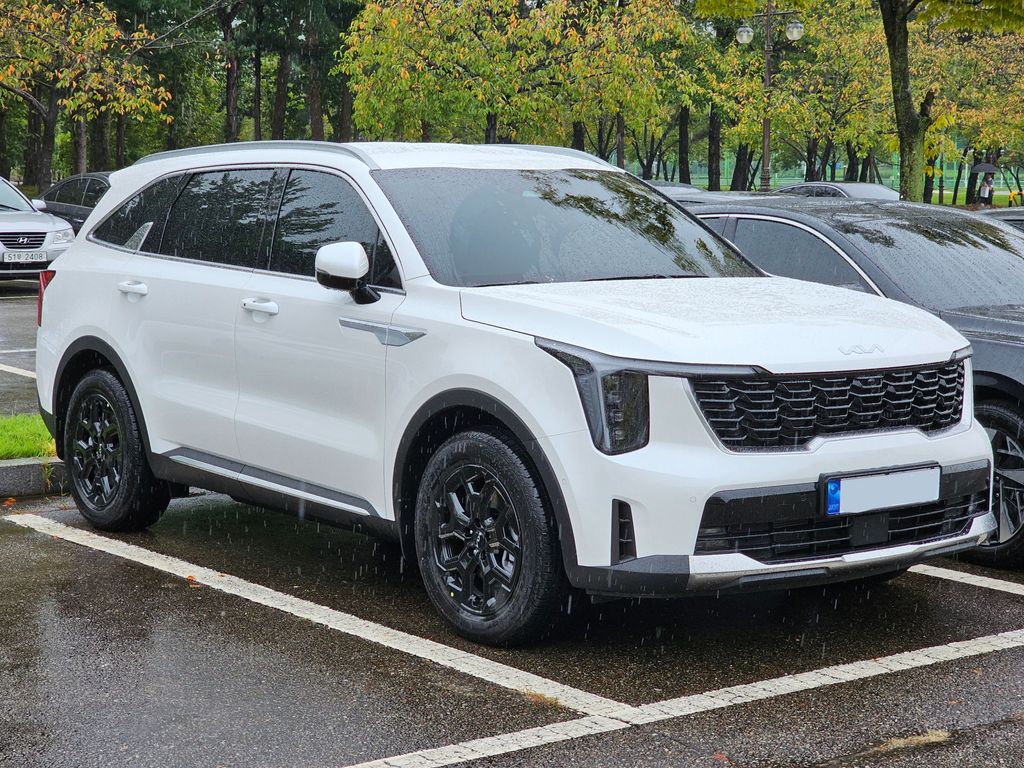
5. **Kia Sorento Hybrid**
The Kia Sorento Hybrid is positioned as a compelling option, promising “a blend of efficiency and practicality” for families and eco-conscious buyers alike. However, despite its modern appeal and the inherent benefits of hybrid technology, its owner satisfaction rate stands at just 42%, indicating a substantial portion of owners would not make the same choice again.
One of the primary sources of dissatisfaction stems from the core of its appeal: the hybrid system itself. Many owners have “pointed out the hybrid system’s inconsistency and the vehicle’s overall performance.” This suggests that the seamless and efficient operation expected from a hybrid powertrain doesn’t always materialize in real-world driving, leading to frustration regarding its promised benefits.
Beyond the hybrid system, issues with the infotainment system have also been frequently cited. In a world increasingly reliant on intuitive in-car technology, a poorly integrated or complex interface can detract significantly from the user experience. Such shortcomings can make even simple tasks cumbersome, diminishing the overall appeal of an otherwise well-equipped vehicle.
Furthermore, aspects of “interior comfort” have also been mentioned as areas needing improvement, affecting the daily usability and long-distance travel experience. When combined with the performance and technological inconsistencies, these factors contribute to a sense that the Sorento Hybrid, while practical on paper, doesn’t fully deliver on the refined experience expected from a modern family vehicle, leaving many owners with buyer’s remorse.
Car Model Information: 2022 Kia Sorento S
Manufacturer: Kia
Production: 2002–present
ModelYears: 2002–present
Class: Compact SUV,Mid-size crossover SUV
BodyStyle: SUV
Layout: Front-engine, rear-wheel-drive,Front-engine, front-wheel-drive,Front-engine, all-wheel-drive
Chassis: ubl
Categories: 2010s cars, ANCAP large off-road, All-wheel-drive vehicles, All Wikipedia articles written in British English, All articles needing additional references
Summary: The Kia Sorento (Korean: 기아 쏘렌토, romanized: Gia Sorento) is a series of two-wheel drive and four-wheel drive family SUVs manufactured by the South Korean manufacturer Kia since 2002 through four generations. Initially a compact SUV built on a body-on-frame chassis, the second-generation Sorento transitioned to a larger car-based platform which placed it into the mid-size crossover SUV class, and has been developed alongside the Hyundai Santa Fe.
Get more information about: Kia Sorento
Buying a high-performing used car >>>
Brand: Kia Model: Sorento
Price: $26,691 Mileage: 26,396 mi.
Read more about: The Future is Now: 12 Groundbreaking Car Models Set to Redefine Driving in the Coming Years
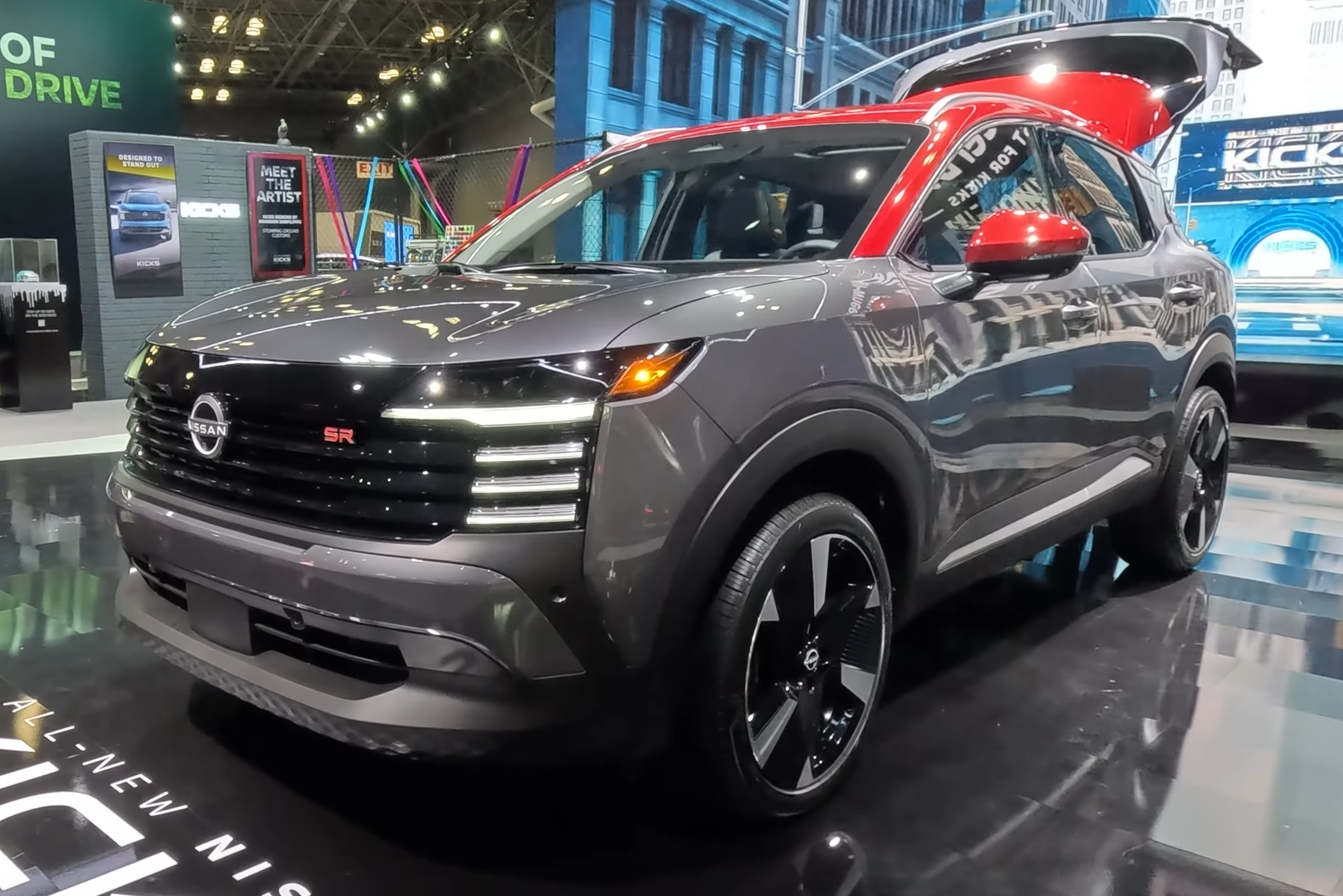
6. **Nissan Kicks**
Designed to serve as a “budget-friendly entry into the SUV market,” the Nissan Kicks aims to attract buyers with its distinctive style and accessible price point. While it successfully captures attention with a “stylish design and good fuel efficiency,” a notable 44% of its owners express regret, suggesting they would prefer a different vehicle if given the chance.
The primary criticisms leveled against the Kicks center on its driving dynamics and powertrain. Owners frequently highlight its “sluggish acceleration,” an issue that can make merging onto highways or executing quick maneuvers a less-than-confident experience. For a vehicle often navigating urban environments, responsive acceleration is a key expectation, and its absence can be a significant drawback.
Compounding these performance concerns are observations about the interior. Owners have criticized the “quality of materials used in the cabin,” indicating that the cost-saving measures become apparent in the tactile experience. While some compromise is expected in a budget-friendly vehicle, a perceived lack of quality can diminish the sense of value and overall satisfaction over time.
Moreover, the “lack of advanced features compared to competitors” further dampens the ownership experience. In a market where connectivity and driver-assistance technologies are increasingly standard, the Kicks’s more basic feature set can leave owners feeling that their vehicle is behind the curve. These combined factors reveal that while the Kicks offers an affordable entry, it ultimately leaves a significant portion of its owners yearning for more comprehensive capabilities and a more refined experience.
Car Model Information: 2024 Nissan ARIYA PLATINUM+
Name: Nissan Kicks
Caption: Second-generation Kicks SV (P16)
Manufacturer: Nissan
Production: 2016–present
Class: Subcompact crossover SUV
BodyStyle: Sport utility vehicle
Predecessor: unbulleted list
ModelYears: 2018–present (North America)
Categories: 2020s cars, All-wheel-drive vehicles, All Wikipedia articles written in British English, Articles containing Japanese-language text, Articles with short description
Summary: The Nissan Kicks (Japanese: 日産・キックス, Hepburn: Nissan Kikkusu) is a subcompact crossover SUV produced by Nissan since 2016. The crossover was initially introduced as a concept car under the same name and was premiered at the 2014 São Paulo International Motor Show. Nissan claimed the concept is inspired by the streets of Brazil.
The first-generation, V platform-based Kicks debuted in São Paulo, Brazil in mid-2016 with the P15 chassis code. The car was designed collaboratively by Nissan’s design headquarters in Atsugi, Japan, Nissan Design America (NDA) in San Diego, California, and Nissan Design America Rio de Janeiro. The first-generation Kicks was then gradually rolled out across Latin America, then it entered the United States and Canada in 2018 to replace the Juke as the subcompact crossover offering in both countries.
The B0 platform-based Kicks was introduced in India in January 2019 with the D15 chassis code. The company stated the vehicle is built on the platform to reduce production costs. It is slightly larger than the V platform-based Kicks, and retained the same wheelbase as the first-generation Dacia Duster and the B0 platform-based Renault Captur. The D15 Kicks ceased production in 2023.
The second-generation Kicks was introduced for the North American market in March 2024.
Get more information about: Nissan Kicks
Buying a high-performing used car >>>
Brand: Nissan Model: Kicks
Price: $29,999 Mileage: 24,162 mi.
Read more about: Avoid These 18 Overrated Car Brands Due to Reliability & High Maintenance
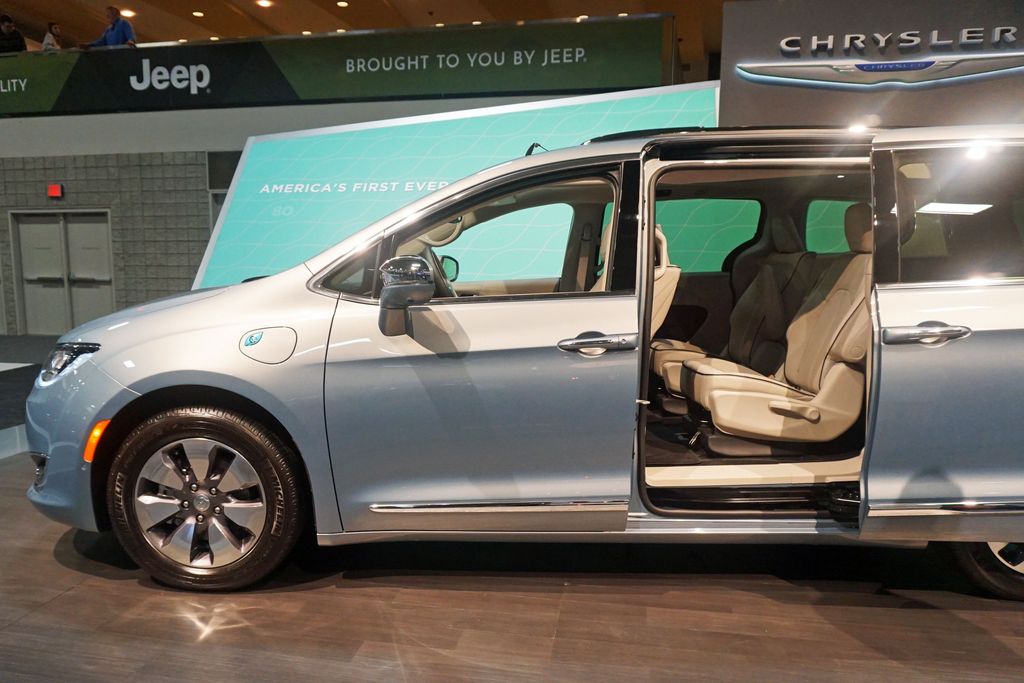
7. **Chrysler Pacifica Hybrid**
The Chrysler Pacifica Hybrid stands out as a “popular minivan,” lauded for its innovative “plug-in hybrid powertrain that offers fuel efficiency,” a desirable trait for families seeking to reduce their environmental footprint and running costs. However, this promising blend of utility and eco-friendliness has been overshadowed by a litany of reliability issues, prompting many owners to question its overall value and leading to considerable regret.
A central pain point for Pacifica Hybrid owners revolves around its battery and electrical systems. Issues such as “battery drain, inconsistent all-electric range, and battery failure” are frequently reported. These problems directly undermine the vehicle’s core appeal, as the promise of extended electric-only driving and reduced fuel consumption often fails to materialize consistently, leading to significant inconvenience and unexpected costs.
Further exacerbating owner frustration is the performance of the “electric continuous variable transmission.” While CVTs can be efficient, those in the Pacifica Hybrid have also been cited as problematic, contributing to a less-than-smooth driving experience and potentially leading to costly repairs. Transmission issues, especially in a family vehicle, are a major concern for reliability and safety.
Many owners have voiced a resounding “No” when asked if the fuel efficiency benefits are enough “to offset the battery and electrical problems.” The persistent unreliability and the financial burden of potential repairs mean that the Pacifica Hybrid, despite its forward-thinking design, has become a source of profound buyer’s remorse for a considerable number of its owners, proving that innovation without robust reliability can be a recipe for regret.
Beyond the Initial Lure: Six More Vehicles That Failed to Deliver on Their Promises
Having explored a spectrum of luxury vehicles that left owners grappling with financial regret and operational disappointment, our journey continues. The narrative of buyer’s remorse, unfortunately, extends further, encompassing a diverse range of models that, despite their initial market appeal or innovative positioning, consistently failed to meet fundamental expectations for performance, reliability, and overall ownership satisfaction. These vehicles serve as stark reminders that even within the premium and mainstream segments, the promise of the open road can quickly become a winding path of unforeseen costs and persistent frustration.
Car Model Information: 2020 Lexus RX 350 Base
Name: Chrysler Pacifica (RU)
Manufacturer: Chrysler (automotive brand)
Aka: Chrysler Voyager,Chrysler Grand Caravan (Canada, 2021–present)
Production: 2016–present
ModelYears: 2017–present
Assembly: Windsor, Ontario
Designer: Irina Zavatski,Winnie Cheung (interior)
Class: Minivan
BodyStyle: 5-door minivan
Layout: Front-engine, front-wheel drive,Front-engine, all-wheel drive
Platform: Compact U.S. Wide platform
Related: Chrysler 200#Second generation (2014–)
Engine: Chrysler Pentastar engine#3.6L,FCA Global Medium Engine
Motor: 2x electric motors (SiEVT main motor & motor generator; PHEV)
Transmission: ZF 9HP transmission,automatic transmission,Continuously variable transmission
Drivetrain: PHEV
ElectricRange: cvt
Battery: val,lithium-ion battery
Wheelbase: 3089 mm
Abbr: on
Order: flip (hybrid)
Length: 203.6 in
Width: 79.6 in
Height: convert
Weight: {{convert,1964,kg,lb,abbr=on,order=flip
Predecessor: Chrysler minivans (RT)
Categories: 2010s cars, All-wheel-drive vehicles, Articles with short description, CS1 Spanish-language sources (es), Cars introduced in 2016
Summary: The Chrysler Pacifica is a minivan produced by the Chrysler division of Stellantis since the 2017 model year. Replacing the Chrysler Town & Country, the Pacifica is the sixth generation of Chrysler minivans, taking its name from the 2004–2008 product line. Along with serving as the first minivan with a plug-in hybrid drivetrain, the Pacifica has also served as a platform for autonomous vehicle development.
For the 2020 model year, Chrysler repackaged the lower-trim versions of the Pacifica as a revived Chrysler Voyager, largely to expand fleet sales of the model line; following the retirement of the Dodge Grand Caravan, the Chrysler Voyager was introduced in Canada for 2021 as the Chrysler Grand Caravan (moving the nameplate from Dodge to Chrysler after 36 years). Following the retirement of the Chrysler 300 sedan, the Pacifica/Voyager/Grand Caravan is currently the only vehicle marketed by Chrysler.
Chrysler has assembled the Pacifica minivan (and the Voyager/Grand Caravan) in its Windsor Assembly facility in Ontario (home to Chrysler minivan assembly since 1983).
Get more information about: Chrysler Pacifica (minivan)
Buying a high-performing used car >>>
Brand: Chrysler Model: Pacifica Hybrid
Price: $30,981 Mileage: 81,179 mi.
Read more about: Anguish on the Freeway: 15 Compacts Buyers Wish They Never Drove Off the Lot
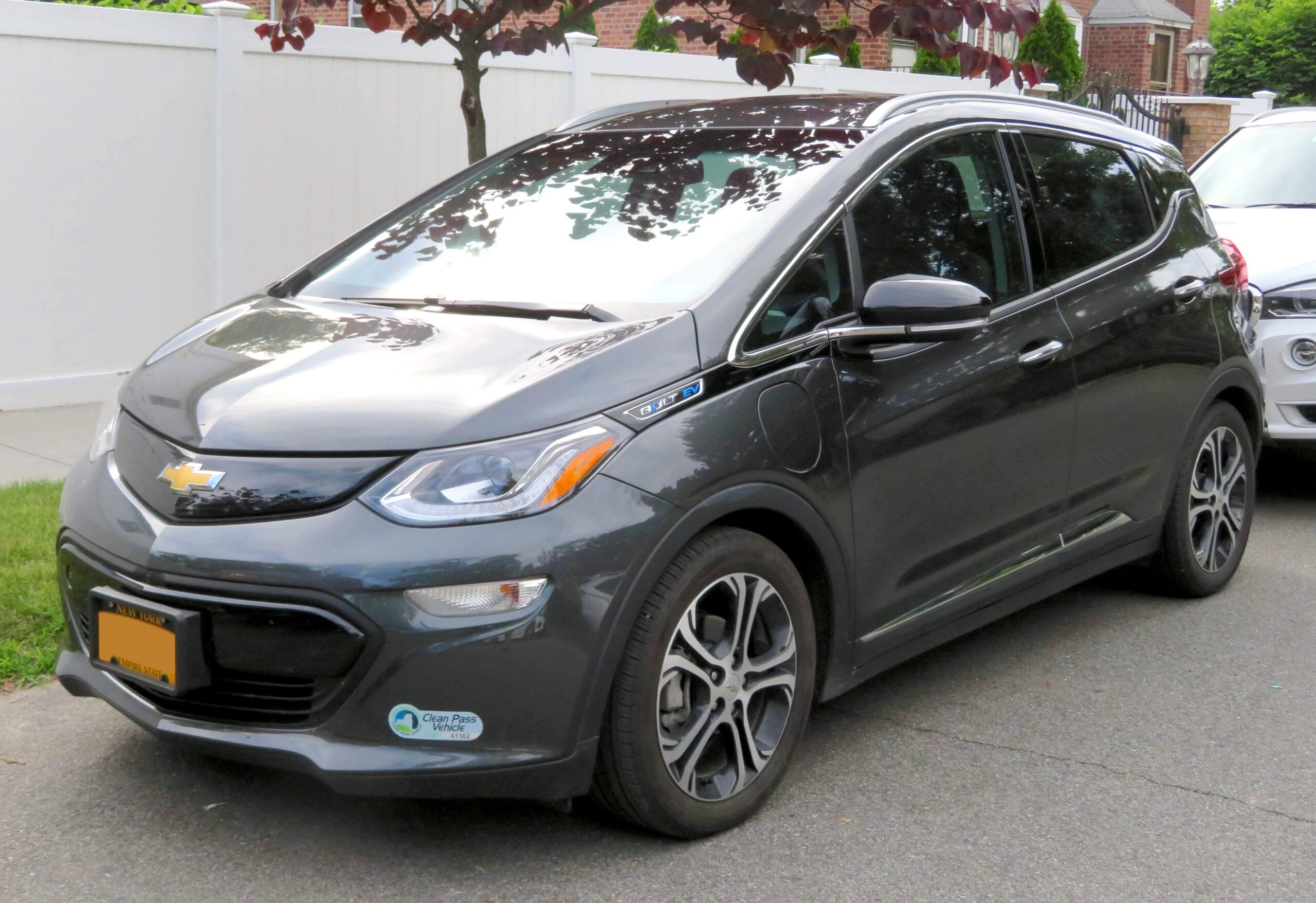
8. **Chevrolet Bolt**
The Chevrolet Bolt, initially heralded as a trailblazer in accessible electric mobility, promised an enticing blend of affordability and a respectable driving range. For many consumers eyeing an entry into the burgeoning EV market, it represented a compelling proposition, a practical step towards sustainable transportation without the premium price tag often associated with electric vehicles. However, behind this promising facade, the Bolt harbored a critical flaw that would soon overshadow its virtues, transforming a hopeful acquisition into a source of considerable anxiety and profound buyer’s remorse for a vast number of its owners.
At the heart of the Bolt’s notorious problems lay a severe and dangerous manufacturing defect within its lithium-ion batteries. These power packs, supplied by LG, were prone to a catastrophic flaw: the potential for internal short-circuiting. This defect could lead to thermal runaway, causing the battery to overheat and, in alarming instances, spontaneously ignite into flames. Such a fundamental safety issue quickly escalated from a technical glitch to a widespread public safety concern, casting a long shadow over the vehicle’s reputation and the perceived safety of electric vehicles as a whole.
The gravity of the battery-related fires necessitated massive intervention, resulting in “big recalls in 2020 and 2021” that affected tens of thousands of vehicles globally. For owners, these recalls meant not just inconvenience, but a constant undercurrent of worry about their vehicle’s safety, fundamentally eroding trust in a machine meant to offer reliable transport. The financial implications for General Motors were staggering, but for individual owners, the hidden costs included not only the time spent on recall repairs but also the intangible depreciation stemming from a damaged public image and the emotional toll of owning a potentially hazardous vehicle.
While the battery fires rightfully dominated headlines, they were not the sole contributors to owner dissatisfaction. Critics and owners alike frequently pointed to other aspects of the Bolt’s design that fell short of expectations, particularly in its driving dynamics. The ride quality was often described as merely “so-so,” lacking the refinement and comfort many had hoped for in a modern compact EV. This mediocrity in ride comfort meant that even on short commutes, the experience could be less than inspiring, failing to deliver the smooth, quiet electric drive anticipated from an otherwise innovative platform.
Furthermore, practical considerations such as the space allocated for rear passengers were often deemed inadequate, limiting the Bolt’s versatility as a family vehicle or for longer journeys. Its handling, too, was frequently characterized as merely “so-so,” failing to offer the engaging or confident road manners found in more polished competitors. These compounding factors, from critical safety defects to uninspired everyday usability, paint a comprehensive picture of a vehicle that, despite its initially attractive price point, ultimately left many owners questioning their decision and wishing they had explored alternatives with greater diligence.
Car Model Information: 2022 Chevrolet Bolt EUV FWD Premier
Name: Chevrolet Bolt EV
Caption: 2022 Chevrolet Bolt EV
Manufacturer: General Motors
Production: unbulleted list
ModelYears: unbulleted list
Class: unbulleted list
BodyStyle: unbulleted list
Layout: Front-engine, front-wheel-drive layout
Predecessor: Chevrolet Spark EV
Categories: 2020s cars, All Wikipedia articles in need of updating, All articles containing potentially dated statements, All articles to be merged, All articles with unsourced statements
Summary: The Chevrolet Bolt EV (marketed in Europe as Opel Ampera-e) is a battery electric subcompact hatchback manufactured and marketed by General Motors under its Chevrolet brand from late 2016 until late 2023, with a brief hiatus between mid-2021 and early 2022.
The first-generation Bolt was developed and manufactured with LG Corporation. Sales of the 2017 Bolt began in California in December 2016; it was released nationwide and international markets release in 2017. A rebadged European variant was marketed as the Opel Ampera-e in mainland Europe. In 2017, the Bolt was the second-best-selling plug-in car in the United States. It was named the 2017 Motor Trend Car of the Year, the 2017 North American Car of the Year, an Automobile magazine 2017 All Star, and was listed in Time magazine’s Best 25 Inventions of 2016. The Ampera-e was discontinued after 2018. By the end of 2020, GM had sold 112,000 Bolt and Ampera-e cars worldwide. The first-generation Bolt had been subject to at least three recalls due to battery fire risks.
In mid-2023, GM officials said they would discontinue the Bolt; after outcry, they announced plans for a next-generation model. The second-generation Bolt, based on the Chevrolet Bolt EUV, was unveiled on October 9, 2025 for model year 2027.
Get more information about: Chevrolet Bolt
Buying a high-performing used car >>>
Brand: Chevrolet Model: Bolt
Price: $21,999 Mileage: 23,596 mi.
Read more about: Anguish on the Freeway: 15 Compacts Buyers Wish They Never Drove Off the Lot
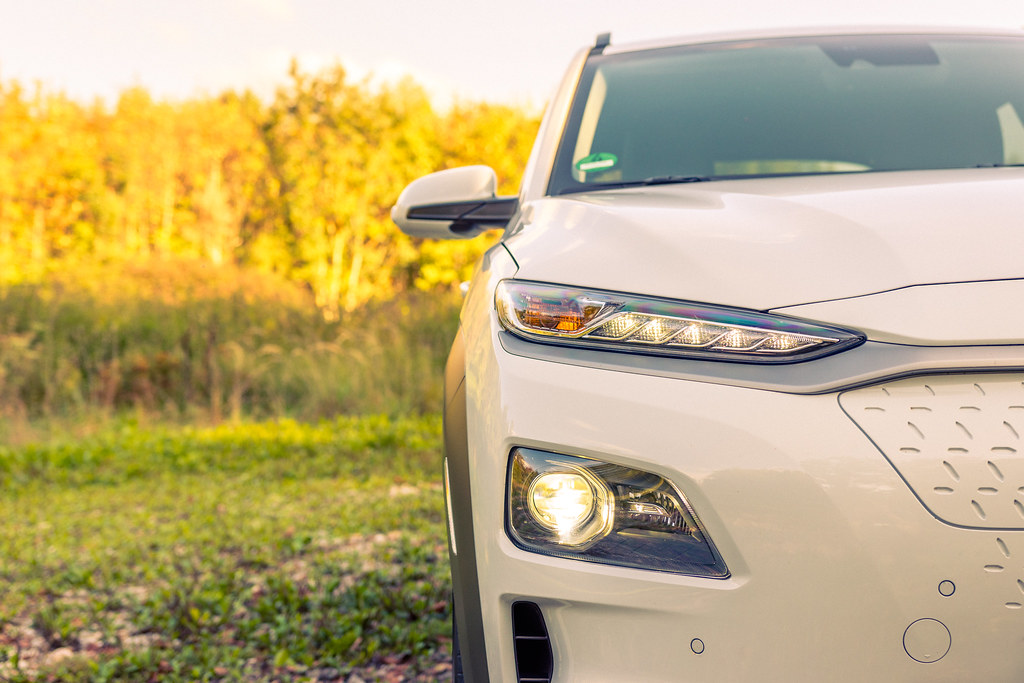
9. **Hyundai Kona Electric**
Hyundai, a brand that has generally been “on quite a roll with some interesting, well-received electric vehicles,” has undeniably made significant strides in the burgeoning EV market. However, even the most successful manufacturers can occasionally introduce a model that falls short of expectations, and in the electric compact SUV segment, the Hyundai Kona Electric unfortunately became “Exhibit A” of these “clunkers.” Despite its initial promise of an efficient and stylish urban electric vehicle, the Kona Electric soon found itself entangled in a web of significant reliability concerns, primarily centered on its battery system.
The most critical and concerning issue in the Kona Electric’s history revolved around, much like the Bolt, a significant risk of “battery fires and recalls.” This deeply troubling safety concern led to “a worldwide recall in 2020 and 2021” as the carmaker moved decisively to “nip the fire risks in the bud by replacing battery packs in affected EVs.” For owners, this meant not just the inconvenience of lengthy service appointments but a profound blow to their confidence in a vehicle that was meant to embody modern, safe, and reliable transportation.
Even after addressing the immediate threat of fires through comprehensive battery pack replacements, the underlying sentiment of dissatisfaction lingered. As the context ominously notes, “the battery issues are just the tip of the iceberg.” This foreboding statement suggests that while the most glaring safety defect was mitigated, a host of other unaddressed or latent problems continued to plague the Kona Electric. For any prospective buyer, such a history, coupled with the explicit warning to “Buyer beware!”, underscores the critical importance of thoroughly researching a vehicle’s long-term reliability and the true extent of its issues, rather than being swayed solely by initial price or environmental credentials.
The implications for owners were clear: the financial burden extended beyond the purchase price to potential unexpected repairs, diminished resale value, and the intangible cost of peace of mind. The promise of hassle-free electric driving was often replaced by anxiety and frustration, making the Kona Electric a prime example of an EV that, despite its good intentions, ultimately failed to deliver on the fundamental aspects of reliability and owner satisfaction.
Car Model Information: 2020 Lexus RX 350 Base
Name: Hyundai Kona
Caption: Hyundai Kona N Line (SX2)
Manufacturer: Hyundai Motor Company
Aka: Hyundai Kauai (Portugal)
Production: 2017–present
ModelYears: 2018–present
Class: Subcompact crossover SUV
BodyStyle: SUV
Layout: ubl
Categories: 2020s cars, All-wheel-drive vehicles, All Wikipedia articles in need of updating, All Wikipedia articles written in British English, Articles containing Chinese-language text
Summary: The Hyundai Kona (Korean: 현대 코나) is a subcompact crossover SUV produced by the South Korean manufacturer Hyundai. The first-generation Kona debuted in June 2017 and the production version was revealed later that year. It is positioned between the Venue or Bayon and the Tucson in Hyundai crossover SUV line-up. The battery electric version called the Kona Electric (or Kona EV) was first launched in South Korea during the first half of 2018 and rolled out gradually worldwide afterwards.
Get more information about: Hyundai Kona
Buying a high-performing used car >>>
Brand: Hyundai Model: Kona Electric
Price: $30,981 Mileage: 81,179 mi.
Read more about: Anguish on the Freeway: 15 Compacts Buyers Wish They Never Drove Off the Lot
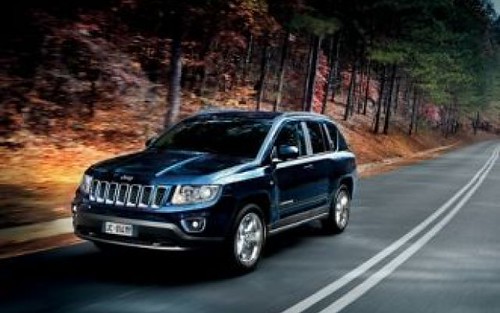
10. **Jeep Compass**
The Jeep Compass, designed to offer a blend of compact SUV practicality and rugged styling, entered the market with the aim of attracting buyers seeking versatility and a touch of adventurous spirit. However, for a significant number of its owners across various model years, this compact SUV has become synonymous with “serious issues.” Far from being a reliable companion for daily commutes or weekend excursions, the Compass has, for many, transformed into what has been aptly described as “a migraine headache on wheels,” leading to a clear recommendation to “steer clear of this SUV.”
At the forefront of owner grievances are persistent and critical transmission problems, a fundamental flaw that severely undermines the vehicle’s driving experience and long-term durability. Complaints frequently target both the “continuously variable transmission (CVT) and 9-speed automatic transmissions,” which are known to “experience herky-jerky shifting and catastrophic failure.” Such unpredictable and often severe transmission issues can lead to dangerous situations on the road, alongside substantial and recurrent repair costs, making the Compass a heavy burden on owners’ finances and patience.
Beyond these debilitating transmission woes, the Compass is plagued by a litany of other mechanical and operational shortcomings. Owners have reported widespread dissatisfaction with “poor engine performance,” indicating a lack of power and responsiveness that detracts from confident driving, especially in demanding situations. Compounding this, “excessive oil consumption” becomes an unwelcome and costly maintenance burden, frequently requiring owners to monitor and top off fluids, adding to the vehicle’s running costs and overall inconvenience.
Further contributing to owner regret are pervasive “electrical system issues,” which can manifest in a multitude of unpredictable ways, from minor annoyances to critical failures impacting safety and functionality. These electrical glitches, coupled with the aforementioned engine and transmission problems, paint a comprehensive picture of a vehicle whose engineering and execution fall significantly short of consumer expectations for reliability and quality in the compact SUV segment. The cumulative effect of these frustrations undeniably positions the Jeep Compass as a model that, for many, simply failed to deliver on its promise of a dependable and enjoyable driving experience.
Car Model Information: 2020 Jeep Cherokee Latitude Plus
Name: Jeep Compass
Caption: 2019 Jeep Compass
Manufacturer: Jeep
Production: 2006–present
ModelYears: 2007–present
Class: Compact crossover SUV
BodyStyle: SUV
Layout: Front-engine, front-wheel-drive layout
Chassis: Unibody
Categories: 2010s cars, 2020s cars, All-wheel-drive vehicles, All Wikipedia articles written in American English, Articles with short description
Summary: The Jeep Compass is a compact crossover SUV, introduced in 2006 for the 2007 model year. The first generation Compass and Patriot, its rebadged variant, were among Jeep’s first crossover SUVs. The second-generation Compass debuted in September 2016 in Brazil and at the Los Angeles International Auto Show in November 2016, sharing a modified platform with the Renegade. It is positioned between the smaller Renegade and the larger Cherokee globally or the Commander in South America. The third-generation Compass debuted in May 2025, built on the STLA Medium by Stellantis, shared with other PSA Groupe vehicles.
Get more information about: Jeep Compass
Buying a high-performing used car >>>
Brand: Jeep Model: Compass
Price: $15,877 Mileage: 96,780 mi.
Read more about: Anguish on the Freeway: 15 Compacts Buyers Wish They Never Drove Off the Lot
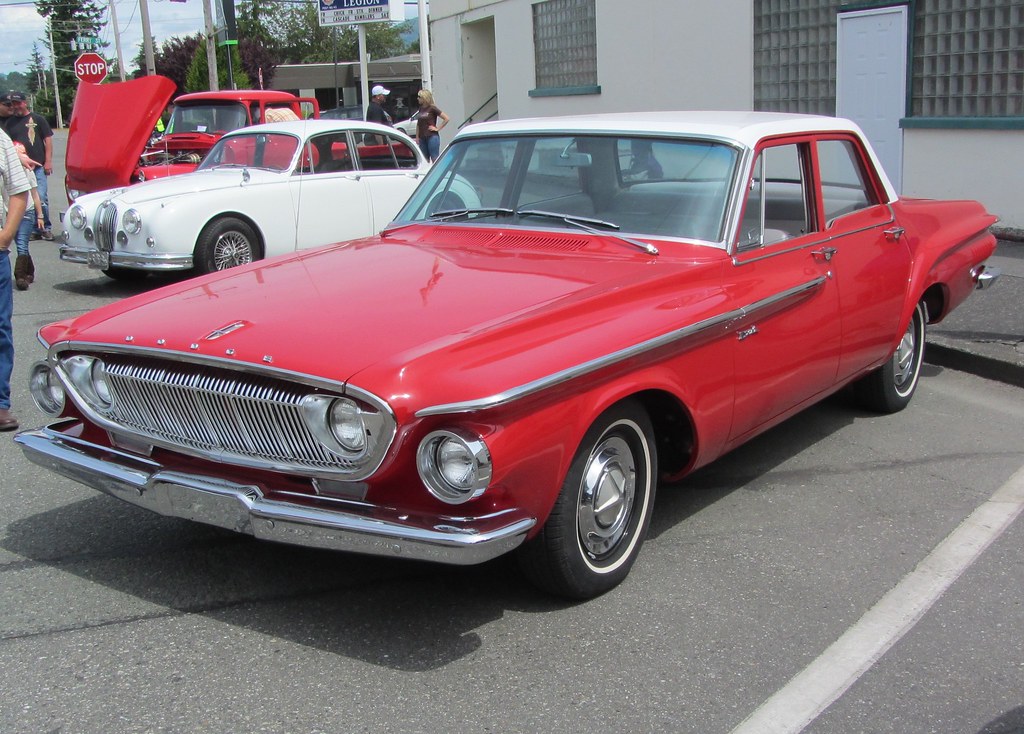
11. **Dodge Dart**
The Dodge Dart, a compact sedan that emerged with aspirations of offering practical yet stylish transportation, quickly earned a reputation for being a vehicle that, despite its modest size, came burdened with “full-size car problems.” This stark contrast between its intended market position and its real-world reliability left many owners deeply disillusioned, creating a pervasive sentiment of buyer’s remorse that transcended isolated incidents. For those who chose the Dart, the question of “Where do we begin?” to list its issues became a common lament.
The breadth of the Dart’s shortcomings was alarmingly extensive, spanning nearly every major mechanical system crucial for a reliable driving experience. Reports of malfunctions and failures ranged “from the transmission to the engine and from the suspension to the brakes,” indicating a fundamental lack of engineering integrity across critical components. This comprehensive array of problems meant that owners were not merely dealing with an occasional defect, but a vehicle inherently prone to a wide spectrum of costly and inconvenient repairs, eroding both confidence and financial stability.
Such widespread mechanical and structural issues directly translated into profoundly low owner satisfaction. According to Consumer Reports, a staggering “around six in 10 buyers say they are not satisfied with the vehicle.” This exceptionally low repurchase intent underscores the profound level of regret experienced by the majority of Dart owners. It highlights a critical failure on Dodge’s part to deliver a reliable product, leading to consistent frustrations that overshadow any initial appeal the compact sedan might have possessed.
Ultimately, the Dodge Dart stands as a cautionary tale, illustrating how a vehicle’s initial price point and styling cannot compensate for severe and pervasive reliability concerns. For many, the dream of an affordable and dependable compact sedan devolved into an ongoing battle with mechanical failures, persistent breakdowns, and the heavy financial burden of continuous repairs, confirming its place among models that owners wish they had never driven off the lot.
Car Model Information: 2015 Dodge Dart SXT
Name: Dodge Dart
Caption: 1966 Dodge Dart GT 2-door hardtop
Manufacturer: Dodge
Production: 1959–1976 (US market)
ModelYears: 1960–1976 (US market)
Class: Full-size
Layout: FR layout
Predecessor: Dodge Coronet#Fourth generation (1957–1959)
Related: Plymouth Valiant,Chrysler Valiant,Dodge Phoenix
Successor: Dodge Aspen,Dodge Diplomat,Talbot Tagora
Categories: 1970s cars, All articles with unsourced statements, Articles with short description, Articles with unsourced statements from December 2023, Articles with unsourced statements from May 2025
Summary: The Dodge Dart is a line of passenger cars produced by Dodge from the 1959 to 1976 model years in North America, with production extended to later years in various other markets.
The production Dodge Dart was introduced as a lower-priced full-size model in 1960 and 1961, but became a mid-size car for one model year for 1962, and was then reduced to a compact for two generations, from 1963 to 1976.
Chrysler had first used ‘Dart’ name plates on two Italian styled show cars, in 1956 and 1957, before it became a Dodge model name. The Dart nameplate was resurrected for a Fiat-derived compact car that was introduced in 2012.
Get more information about: Dodge Dart
Buying a high-performing used car >>>
Brand: Dodge Model: Dart
Price: $9,995 Mileage: 143,082 mi.
Read more about: Anguish on the Freeway: 15 Compacts Buyers Wish They Never Drove Off the Lot
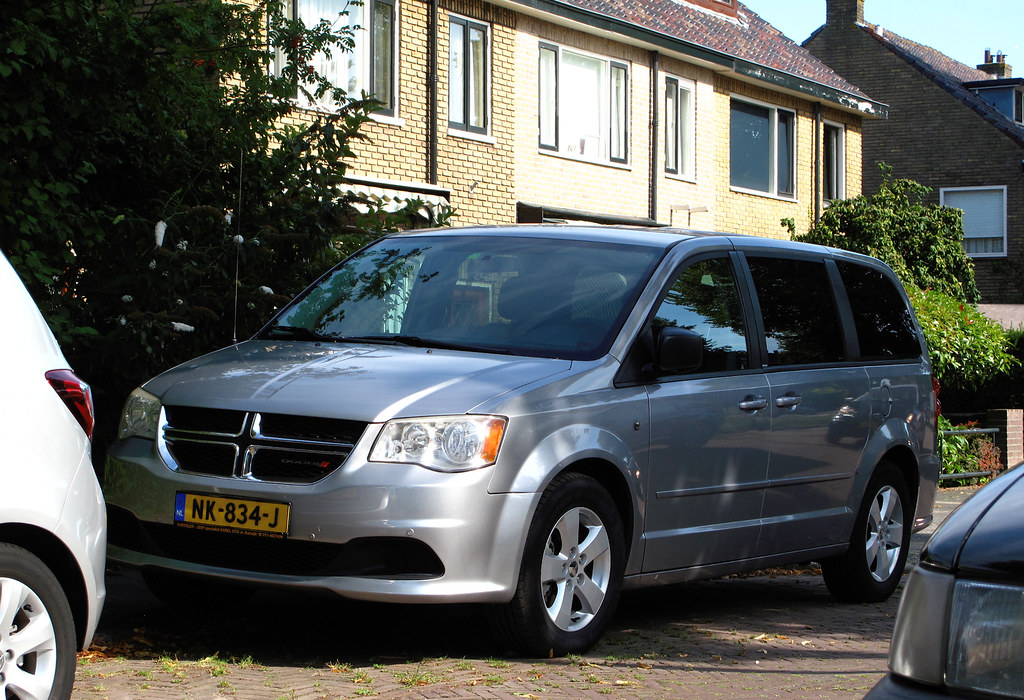
12. **Dodge Grand Caravan**
The Dodge Grand Caravan holds a unique, often nostalgic, place in the automotive landscape, having served as a quintessential family hauler for generations. While “many families have memories — some fond and some not — of traveling in Dodge Grand Caravans,” the real-world ownership experience for numerous individuals has been anything but ideal. Despite its undeniable practicality for transporting “family, pet, and thing,” the minivan’s notorious reliability issues have made it anything but “smooth driving” or dependable, ultimately pushing many owners toward profound regret.
A central and debilitating issue that consistently plagued the Grand Caravan was its propensity for “transmission failure,” which emerged as “a common complaint from owners.” For a vehicle designed specifically for heavy-duty family transport, a failing transmission is not just an inconvenience but a critical safety concern and a significant financial blow. The very foundation of its utility – its ability to haul – was compromised by this pervasive mechanical vulnerability, leading to constant anxiety and unexpected expenses.
Compounding the frustration, these transmission issues rarely manifested without warning. Before the transmissions would “go kaput,” owners frequently “experience issues like delayed gear engagement, rough shifting, and slipping.” These precursor symptoms not only foreshadowed imminent and costly repairs but also severely degraded the daily driving experience, making acceleration unpredictable and journeys less comfortable. Such consistent mechanical instability undermined the core purpose of a family vehicle, demanding attention and expense that few owners anticipated.
Adding to the litany of problems, “many owners also complain about electrical system problems and heavy oil consumption.” These additional mechanical and functional flaws further exacerbated the financial and emotional toll of ownership. Electrical glitches could lead to unpredictable failures of various systems, while excessive oil consumption indicated deeper engine issues. The cumulative effect of these widespread reliability concerns led to a resounding sentiment of regret: “If they could rewind time and have a do-over, they would gladly choose something else,” a testament to the depth of their dissatisfaction.
Car Model Information: 2020 Lexus RX 350 Base
Caption: 2011 Dodge Grand Caravan Mainstreet
Name: Dodge Grand Caravan
Manufacturer: Chrysler Corporation,Daimler AG,Chrysler LLC,Chrysler Group LLC,FCA US LLC
Class: Minivan
Layout: FF layout,F4 layout
Production: November 2, 1983 –August 21, 2020
ModelYears: 1984–2020
Related: Plymouth Voyager,Chrysler Town & Country (minivan),Dodge Mini Ram,Chrysler Voyager,Volkswagen Routan
Assembly: Windsor, Ontario,Fenton, Missouri,Fenton, Missouri,Fuzhou
Successor: Dodge Journey,Chrysler Voyager
Categories: All-wheel-drive vehicles, All articles with unsourced statements, Articles with short description, Articles with unsourced statements from December 2017, Articles with unsourced statements from May 2009
Summary: The Dodge Caravan is a series of minivans manufactured by Chrysler from the 1984 through 2020 model years. The Dodge version of the Chrysler minivans, was marketed as both a passenger van and a cargo van (the only version of the model line offered in the latter configuration). For 1987, the model line was joined by the long-wheelbase Dodge Grand Caravan. Produced in five generations across 36 model years, the Dodge Caravan is the second longest-lived Dodge nameplate (exceeded only by the Dodge Charger). Initially marketed as the Dodge counterpart of the Plymouth Voyager, the Caravan was later slotted between the Voyager and the Chrysler Town & Country. Following the demise of Plymouth, the model line became the lowest-price Chrysler minivan, ultimately slotted below the Chrysler Pacifica.
Sold primarily in the United States and Canada, the Dodge Caravan was also marketed in Europe and other international markets under the Chrysler brand (as the Chrysler Voyager or Chrysler Caravan). From 2008 onward, Dodge marketed the model line only as the Grand Caravan; Ram Trucks sold a cargo-only version of the model line as the Ram C/V Tradesman. The model line was also rebranded as the Volkswagen Routan from 2009 through 2014.
After the 2020 model year, the Dodge Grand Caravan was discontinued, ending production on August 21, 2020. For 2021 production, the Grand Caravan nameplate was moved to Chrysler, which used it for a Canadian-market version of the Chrysler Pacifica (in the United States, the exact vehicle was marketed as the Chrysler Voyager).
For its entire production run, the Dodge Caravan/Grand Caravan was manufactured by Chrysler Canada (now Stellantis Canada) at its Windsor Assembly facility (Windsor, Ontario). From 1987 until 2007, the model line was also manufactured by Chrysler at its Saint Louis Assembly facility (Fenton, Missouri). Since their introduction in late 1983, over 14.6 million Chrysler minivans have been sold worldwide (including export versions and versions sold through rebranding).
Get more information about: Dodge Caravan
Buying a high-performing used car >>>
Brand: Dodge Model: Grand Caravan
Price: $30,981 Mileage: 81,179 mi.
Read more about: Anguish on the Freeway: 15 Compacts Buyers Wish They Never Drove Off the Lot
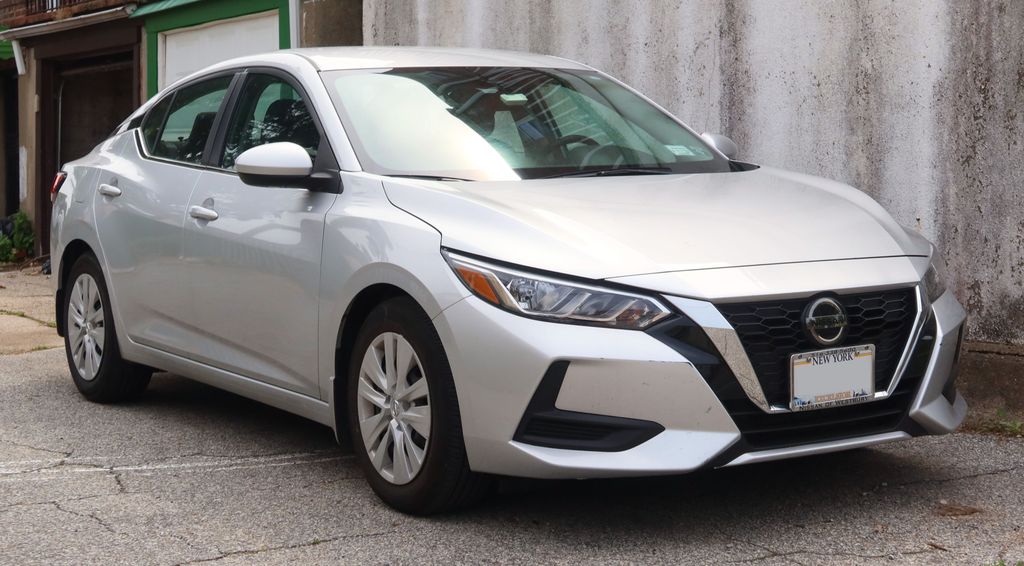
13. **Nissan Sentra**
The Nissan Sentra, a long-standing contender in the compact sedan segment, presents a mixed legacy in terms of owner satisfaction and reliability. While it is true that “there are some good Nissan Sentra model years,” a significant portion of its history, specifically models “made from 2013 to 2019,” has been characterized as “horrific.” For many consumers seeking a dependable and economical daily driver, these particular iterations of the Sentra delivered quite the opposite, becoming a source of consistent frustration and financial strain.
At the epicenter of the Sentra’s reliability woes during these challenging years was its “infamous CVT” (Continuously Variable Transmission). This particular transmission technology, intended to offer smoother operation and better fuel economy, instead proved to be “a thorn in the side of many Sentra owners.” Its inherent design flaws and manufacturing inconsistencies led to a plethora of problems that severely compromised the driving experience and the vehicle’s long-term viability, making it a primary driver of owner dissatisfaction.
The specific “CVT problems include overheating, jerky acceleration, and shuddering.” These issues were not merely minor annoyances; they represented fundamental failures in power delivery and vehicle control, making highway merging hazardous and everyday driving a constant source of discomfort and concern. The recurrent nature of these transmission defects often led to expensive repairs or even complete transmission replacements, placing a significant and unexpected financial burden on owners.
Beyond the pervasive transmission concerns, the Sentra also suffered from other critical mechanical flaws. Among this “laundry list of issues is engine stalling,” a serious safety hazard that could occur without warning, leaving drivers stranded or in precarious situations. Furthermore, the vehicle’s reliability record was further tarnished by “many recalls related to the vehicle’s airbags, seatbelts, brakes, and more.” These safety-critical recalls highlighted a deeper systemic problem in design and manufacturing, transforming the Sentra from a simple mode of transport into a constant source of worry and expense for its owners.
Car Model Information: 2023 Nissan Sentra SV
Name: Nissan Sentra
Caption: 2021 Nissan Sentra SR (B18; Canada)
Manufacturer: Nissan
Aka: Nissan Sunny
Production: 1982–present
Class: Subcompact car
Predecessor: Nissan Sunny#B310
Categories: 1990s cars, 2000s cars, 2010s cars, 2020s cars, All Wikipedia articles written in American English
Summary: The Nissan Sentra is a series of automobiles manufactured by the Japanese automaker Nissan since 1982. Since 1999, the Sentra has been categorized as a compact car, while previously it occupied the subcompact class. Until 2006, Sentra was a rebadged export version of the Japanese Nissan Sunny, but since the 2013 model year, Sentra is a rebadged export version of the Sylphy. The Sentra nameplate is not used in Japan. Many other countries in Latin America sell their versions of the Sunny as the Sentra. In Mexico, the first three generations of the Sentra were known as the Nissan Tsuru (Japanese for crane), and the B13 model was sold under that name until 2017, alongside the updated models badged as Sentra.
In North America, the Sentra currently serves as Nissan’s compact car, despite being rated as a mid-size car by the EPA due to its interior volume since the 2007 model year. While previous Sentras were subcompacts, the Sentra has grown over the years, with the Nissan Versa having replaced the Sentra in the entry-level area.
The Sentra name was created for Nissan by Ira Bachrach of NameLab, and Bachrach describes the origin as “Nissan wanted consumers to understand that it was quite safe even though it was small. The word Sentra sounds like central as well as sentry, which evokes images of safety.”
Get more information about: Nissan Sentra
Buying a high-performing used car >>>
Brand: Nissan Model: Sentra
Price: $19,490 Mileage: 41,832 mi.
Read more about: Anguish on the Freeway: 15 Compacts Buyers Wish They Never Drove Off the Lot
The journey through these additional six models further solidifies a sobering truth: a vehicle’s initial allure, whether through affordability, innovative technology, or established brand reputation, is often a poor predictor of long-term owner satisfaction. From catastrophic battery failures in promising EVs to chronic transmission woes and pervasive quality concerns in SUVs and sedans, these vehicles underscore that the true cost of ownership extends far beyond the dealership price tag. For savvy buyers and seasoned enthusiasts alike, learning from the costly experiences of others remains an invaluable strategy in navigating the complex automotive landscape, ensuring that the dream of a new car doesn’t devolve into an avoidable financial nightmare.

